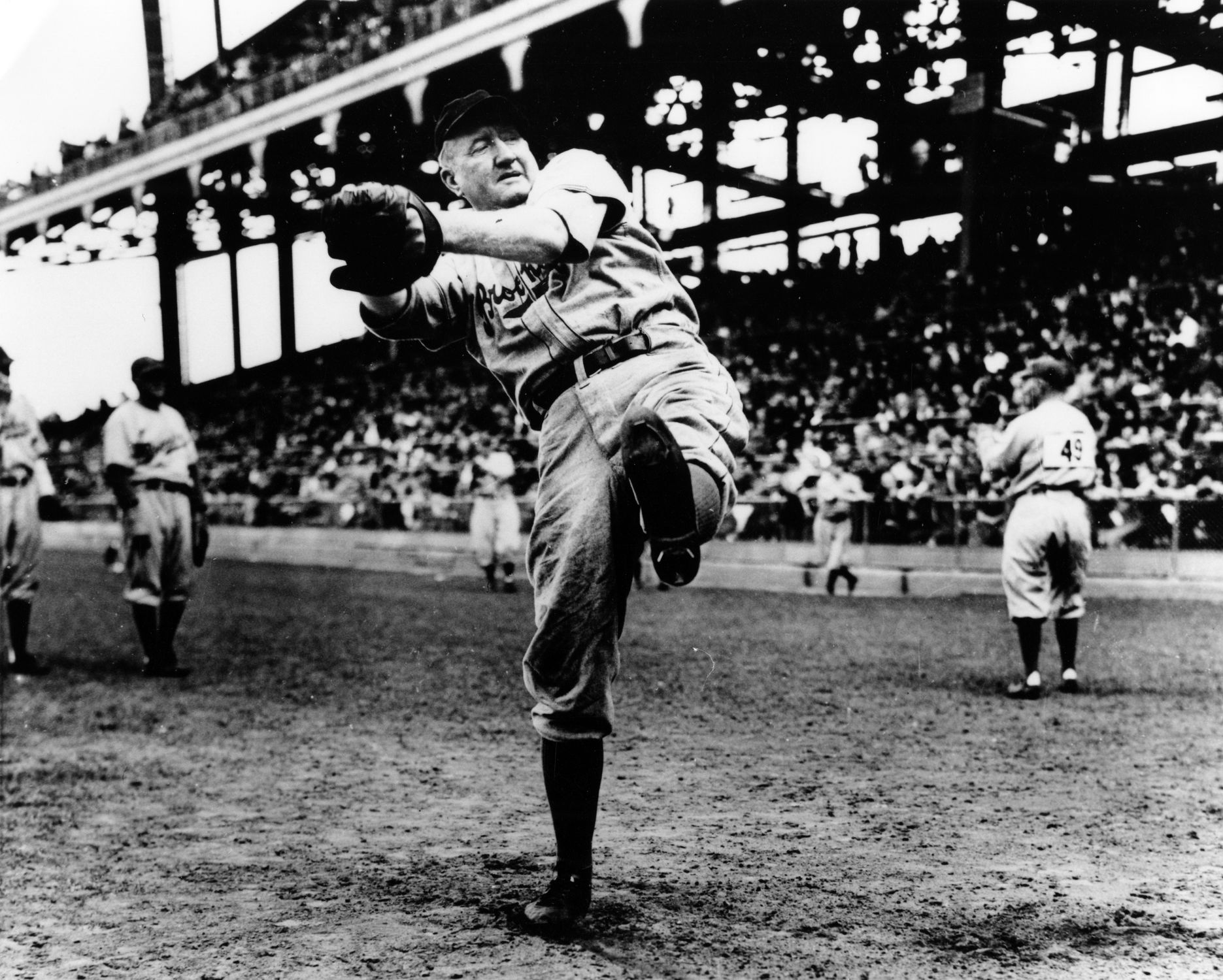
Orient native and National Baseball Hall of Fame pitcher Dazzy Vance of the Brooklyn Dodgers warming up. “Dazzy Vance could throw a cream puff through a battleship,” said former Brooklyn Dodgers teammate Johnny Frederick. Photo courtesy of National Baseball Hall of Fame Library, BL-4118-99
By John Skipper
The old fisherman loved to sit on the front porch and entertain the people around him with one story after another. Often he would laugh as he talked and his sides would jiggle and his eyes would twinkle above his bulbous nose but the floppy hat he almost always wore when he was outdoors hardly budged, nor did the cigar stub in the corner of his mouth.
The storyteller was Florida land baron Charles Arthur Vance — or was it Arthur Charles Vance? It didn’t really matter because everyone called him “Dazzy.” And many of the stories he told were not about his fishing exploits but about his days as a Major League Baseball (MLB) pitcher. Dazzy Vance, a native Iowan, pitched 16 years in the big leagues, mostly with the Brooklyn Dodgers and was the first Dodger to be elected to the National Baseball Hall of Fame.
He led the National League (NL) in strikeouts for seven consecutive years (1922-1928), threw a one-hitter and a no-hitter in consecutive starts in 1925 and was named the NL’s Most Valuable Player in 1924 when he won 28 games. He won 197 games in his career, a remarkable feat considering he did not make it to the big leagues to stay until he was 31 years old having only thrown 33 innings in MLB during his twenties.
Vance was a great ballplayer but also a shrewd businessman. While earning a good living on the ball diamond, he was investing in Florida real estate. In fact, by the time he retired, he owned the hotel in Homosassa Springs, near Clearwater, where he often sat on the porch and told his stories, as well as 3,300 acres surrounding it.
And, oh, those stories. He chuckled as he told his avid listeners about how his pitching style forced a rules change in MLB, or the antics of him and his Brooklyn teammates, who came to be known as the “Daffiness Boys” and about the game in which three Dodger baserunners all wound up on the same base.
His illustrious career, filled with great achievements along with hilarious antics, did not come easily for Vance. He was born on March 4, 1891, in Orient, a small rural settlement in Adair County. He was the youngest of six children and almost from birth, he was destined to have a life far different than most people’s.
For one thing, there is no first name on his birth certificate, still filed in the Division of Records in the Iowa Department of Health. It is believed the doctor who delivered the baby completed his work and made his way to his next stop, not waiting to learn the name of the baby. The top line of the birth certificate reads “(No Name) Vance.”
The name “Charles Arthur Vance,” was written by his mother in the family Bible. Vance preferred his middle name and began calling himself “Arthur Charles Vance” as a young adult and, years later, requested that name be inscribed on his Hall of Fame plaque.
The family moved from Iowa to Cowles, Neb., when Vance was six. He befriended a neighbor who was an avid hunter who showed the youngster some of the pelts he kept as souvenirs. The hunter referred to them as his “dazzies,” as in “ain’t this a dazzy,” when showing them to young Vance, apparently mispronouncing “daisy” or “doozy.” The boy repeated the mispronunciation in telling family and friends about the neighbor’s hunting successes, and the boy became affectionately known as Dazzy, a nickname that stuck for the rest of his life. Or at least, that’s how Vance explained his nickname.
TO READ THE ENTIRE STORY AND OTHER FASCINATING STORIES ABOUT IOWA HISTORY, subscribe to Iowa History Journal.
